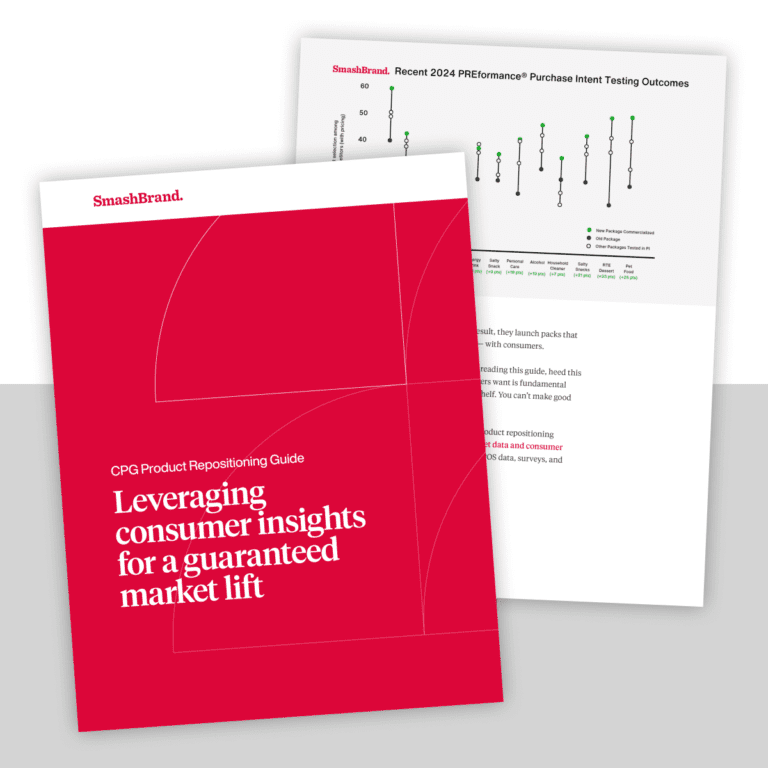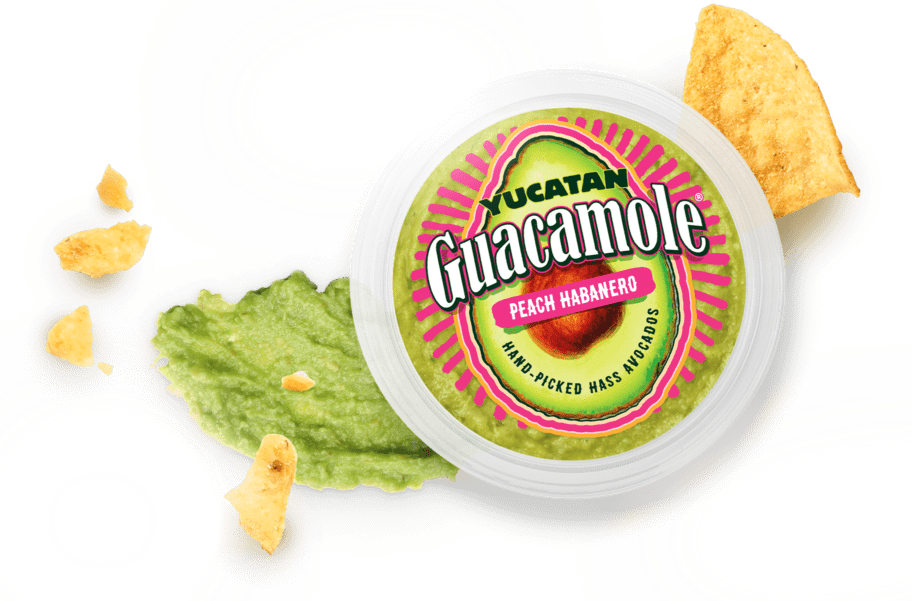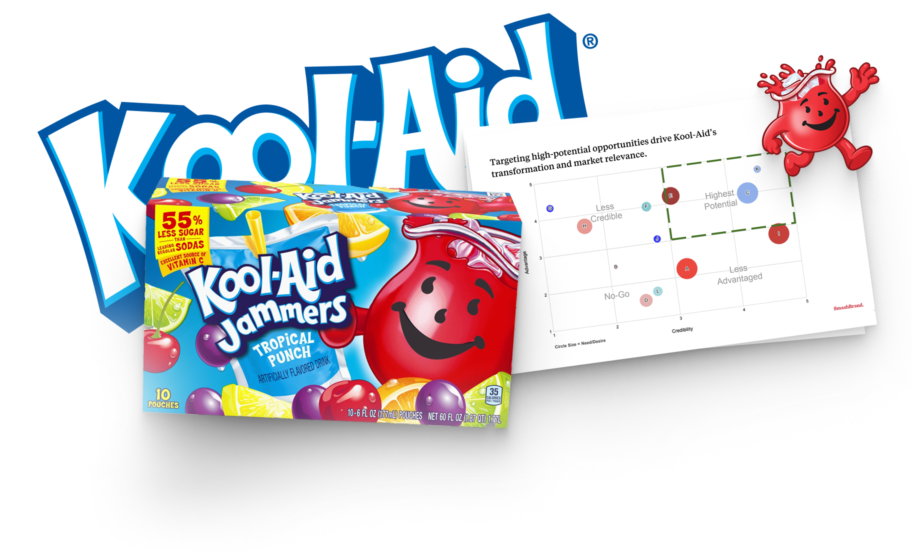Despite its light and approachable appearance, cosmetic packaging design is a niche with substantial retail competition. As a result, in recent years, the cosmetic industry has seen innovative packaging design trends.
We’ve all seen it: your typical cosmetics aisle is wall-to-wall options, with big-name brands getting the most attention and smaller brands often getting lost in the shuffle. For this reason, new beauty brands are shifting focus to an Ecommerce strategy where they can reach customers directly.
Unfortunately, in this scenario, direct-to-consumer advertising platforms such as TikTok, Instagram, and Google Ads are becoming increasingly expensive due to the emergence of numerous cosmetic companies. Organic social media campaigns are no longer as effective as they once were, thanks to the throttling these platforms have used to encourage ad spend.
So while it may seem daunting, on-shelf presents an opportunity for new brands to break through in the beauty industry. But only if taking the appropriate steps…
Smaller cosmetics brands hoping to compete on-shelf must inspect their beauty packaging design strategy from top to bottom. They must pay special attention to how brands achieve success and the essential design principles they’re leveraging to succeed.
Cosmetic categories.
In the cosmetics industry, every category has its own product design language. But relying solely on what’s trending within your vertical can lead to predictable outcomes. Breakout cosmetic design starts by looking beyond your aisle.
Whether it’s design makeup packaging or full-scale cosmetic product packaging design, the most effective strategies often pull inspiration from unexpected places. Today’s top beauty package design trends are shaped not just by consumer preferences, but by insights drawn across categories, sometimes from the opposite side of the Ulta store.
To win at shelf, cosmetic package design must do more than look good. It needs to perform. That means blending creativity with data to produce beauty product packaging design that demands attention and drives conversion. From packaging cosmetic design concepts to execution-ready cosmetic packaging ideas, the smartest brands think cross-category and design accordingly.
Face skin care cosmetics.
Facial skincare packaging is subtle. Perhaps the most health-focused of all cosmetic categories, facial skincare products follow a design strategy that implies safe and natural ingredients. I mean, who wants to put dangerous chemicals on their face?
Body skin care products.
The body skin care aisle is a collision of extremes, affordable naturals share shelf space with luxury lotions, all competing for the same seconds of shopper attention. In this category, cosmetics package design does more than wrap a product; it signals value, quality, and intent.
A smart lotion packaging design strategy starts with one thing: knowing your audience. Whether you’re aiming for indulgence or accessibility, your beauty brand packaging needs to translate that positioning into visual impact. From makeup packaging design principles to cosmetics layout design, every detail matters.
Great beauty cream packaging design strikes a balance between form and function. And it’s not just about beautiful cosmetic packaging, it’s about packaging that performs. That’s where a beauty packaging agency like SmashBrand delivers: we fuse insights with aesthetics to build packs that win on shelf and in the cart.
Makeup products.
Makeup packaging is all about experience. The best cosmetic packaging always supports how consumers apply, carry, and remove the product. That means beauty product packaging must strike a balance between form and usability at every point of contact.
The best beauty packaging tells a story while solving real-world friction points. Is it easy to open? Mess-free? Travel-friendly? These aren’t afterthoughts; they’re part of the strategy. And that’s where true beauty packaging design services make an impact.
At SmashBrand, we’re more than a beauty packaging design agency. We build packaging systems that deliver shelf impact and consumer satisfaction. Because the best cosmetic packaging design does more than turn heads, it drives repeat purchase.
Hair care products.
There is perhaps no greater fear of cosmetic consumers than of a bad hair day. Often, consumers take a multifaceted approach to hair care with shampoos, conditioners, leave-ins, and supplements. This type of cosmetic packaging needs to imply fast-acting and long-lasting results.
Nail care products.
Style is everything with nail care packaging. Perhaps the hard shell of the nails implies fewer chemicals will penetrate the surface, but there is still a tendency to sacrifice in the name of glamour.
Fragrance products.
Like the spirits industry and premium alcohol packaging designs, perfume and cologne have a level of sophistication that is evident even in the most affordable brands. The glass cosmetic bottle is a go-to choice, but the shape and size differ widely.
Cosmetic customer research.
It’s hard to get customers excited about your design when you don’t know who those customers are! If you haven’t yet, one of the first things you should consider is your exact customer profile.
Are you trying to reach customers who buy those high-end luxury brands like Dior or Chanel? Or are you more focused on natural ingredients and sustainability, targeting customers who prefer to shop with an eco-friendly approach? That is not a bad goal, considering that 61% of the cosmetics market share comes from plastic packaging. We will touch on this in a moment…
Luxury cosmetic packaging.
Putting pricing strategies aside, luxury is a key purchase driver for most consumers of cosmetic products. Consumers expect high-end cosmetic packaging in brands found in boutique cosmetic stores, as well as within the aisles of Target.
The question is, how can you showcase premium cosmetic packaging within your pricing model? Of course, test the impact of your luxury cosmetic packaging design to make sure it is worth the investment.
Sustainable cosmetic packaging.
Sustainable ingredients have been and continue to be an essential consideration for cosmetic brands. But what about the packaging used on cosmetic products?
Does plastic packaging affect purchase intent, and does switching to recyclable packaging result in a profit that at least matches the increased cost?
Is our secondary cosmetic cardboard packaging hurting the image of our brand because we are not directly stating the use of recyclable paper in our cosmetic packaging?
We know bisphenol-A is not desirable for water bottles, but does switching to BPA-free cosmetic packaging lead to more repeat purchases?
These are all questions you have to ask in today’s world, but it doesn’t always mean we can tie the trend to profitability. Recyclable cosmetic packaging has a significant impact on our environment, but we cannot guarantee a substantial effect on your total revenues.
Modern cosmetic packaging may call into question many of these purchase drivers, but testing how messaging affects your bottom line is crucial. Is sustainability better served as a part of your brand strategy rather than being used as a part of your label or package copy? Test and find out for sure.
Youthful cosmetic packaging.
With the past behind us, let’s shift our attention to the cosmetic consumers of the future.
Clearly, a brand selling fun beauty products to teenagers has more leeway for fresh, funky designs and bold color swaths than companies aiming at the Estée Lauder crowd.
Part of these decisions has to do with your brand‘s unique personality. This involves not only who you’re targeting but also your own company values. You must stay consistent here and align these ideas as you design your packaging. To put that another way, would your product line fit in better at Sephora or Hot Topic?
Cosmetics packaging for your preferred retailer.
And what about your preferred sales channels? Are your products sold in a department store? Are you trying to compete directly in the makeup aisle of CVS, Bloomingdale’s, or Nordstrom? Perhaps you work directly with a small space cosmetic shop, such as a beauty supply store that caters to hair stylists and estheticians?
Where exactly do your products live? Do they sit on a cosmetic shop counter? On an end cap? Or in a long, dark, and dreary aisle?
A lot of market research needs to be done explicitly based on your shelf (and store) competitors. Therefore, simulated testing with an accurate competitive landscape is essential to the SmashBrand package testing methodology.
Perform competitive research.
Cosmetic competitors exist around every corner. In the websites your consumers visit, the magazines they read, and the social circles where they frequent. Competitive research in your design process involves examining competitors where they exist.
The result of lackluster competitive research is head-scratching, as to why your brand struggles to take consumers from buyer consideration to making purchasing decisions. Point blank, extensive competitor research must be part of the cosmetic product packaging process.
A primer on cosmetic label design.
Even after you’ve clearly outlined your market and understand the competitive landscape, coming up with standout designs isn’t easy. Whenever someone devises a “rule” for what constitutes effective design, another company succeeds by subverting it.
Indeed, there are a few actual limits in cosmetics design, which can make ideation a challenge. If anything’s fair game, where do we start?
If you don’t know where to begin, we recommend using design principles as your guiding star. (And while there are a lot of unique elements worth considering here, we’ll review just a few of the most important.)
- Contrast – How distinct elements, colors, or fonts are from one another in a layout.
- Space – How white space or negative space is used to balance visual elements.
- Balance – How much “weight” each visual element has for drawing the eye.
- Movement – How weighted elements coordinate to guide and draw the eye in a set direction.
- Emphasis – Certain elements are made larger or more prominent to show importance.
- Repetition – Use of repeating elements or patterns for visual consistency.
The allure of subtle packaging elements.
When your design is excellent and you are applying the above elements correctly, people may not even notice them. Rarely will a shopper sit back and say, “Wow, that lipstick tube has incredible color contrast!”. However, the elements are sticking in their minds and unconsciously trigger information about your brand‘s qualities.
Simple research shows consumers pick up unconscious cues from cosmetic packaging designs. And when the packaging makes them believe the product is high-end, they are more willing to think it is superior overall.
Develop a unique style.
Armed with the above visual guidelines, it’s time to develop a cosmetics design style that suits your cosmetic brand.
Take the above elements and experiment with original designs. Think long-term here. Intense and ostentatious designs are brilliant at grabbing customers’ attention, but their style burns quickly and fades away as the novelty wears off.
Alternatively, cosmetics designs that take a more modern, minimalist approach (as most high-end brands do these days) tend to enjoy a more timeless quality. Keep these ideas in mind as you design for your audience.
Of course, as we mentioned above, sometimes we make rules only to break them, so don’t be afraid to experiment. Common design trends in cosmetics include clean and minimal layouts, designs with intricate lines and patterns, and often flowery, earthy tones.
But keep your visual hierarchy in mind.
All the above elements will help you craft a unique cosmetic packaging strategy for Walmart that is tailored to your brand, but always pay attention to the messages you’re conveying with your layout. And not just in the “we’re natural, we’re approachable” sort of way. Every design element in your packaging sends a message, a concept known in the design world as your visual hierarchy.
This term broadly refers to the importance of each visual element in your overall layout. The above principles come into play here: balance, emphasis, contrast, and so on. The most essential elements in your design should be the most significant and most visually distinct.
This often means creating the brand name and logo design for makeup brands, as cosmetics packaging is typically small with limited real estate to work with. If you’re designing for smaller-size tubes, clamshells, or bottles, pay specific attention to the messages you’re putting forth in your layout.

Nice Package
Don’t miss out on our monthly newsletter Nice Package!
Each month, we deliver a data-driven newsletter directly to your inbox, unpacking a critical topic in the FMCG & CPG industry.
"*" indicates required fields
Testing your cosmetics packaging for KPIs.
Feel free to unleash your creativity, but remember the customer‘s opinion matters most. Validate your research and cosmetic packaging mock-ups through internal feedback reviews, external focus groups, A/B tests, or other types of product testing.
Evaluate each cosmetic packaging mockup against the above design principles and your target market’s feedback. Whether you’re selling cosmetics, beauty products, or any other consumer packaged goods, this approach is the best way forward.
Cosmetic packaging design agency.
SmashBrand is a data-driven cosmetic product packaging design agency that transforms beauty brands into shelf-dominating powerhouses. We don’t just create beautiful packaging, we engineer packaging that performs. From startups to global CPGs, our design work is backed by consumer insights, behavioral data, and proven testing methodologies to ensure your product not only stands out but sells. Whether you’re launching a new line or refreshing an existing one, we deliver packaging that elevates your brand and accelerates growth.
Our process begins with radical empathy, which involves a deep understanding of your target consumer, their habits, and the real-world context in which they shop. We blend this insight with our proprietary testing and strategic design systems to craft packaging that communicates value, builds trust, and drives purchase. Every decision is intentional. Every design is validated. This is how we guarantee performance in the competitive cosmetics space. Ready to create packaging that wins on the shelf and in the market? Let’s get started.
Subscribe to
Nice Package.
SmashBrand’s Nice Package: Stay current with our latest insights
Free Resource.

CPG product repositioning guide.
Explore the five undeniable signs your CPG product needs repositioning along with strategies for leveraging consumer insights for a guaranteed market lift.
Download Whitepaper About CPG product repositioning guide.


